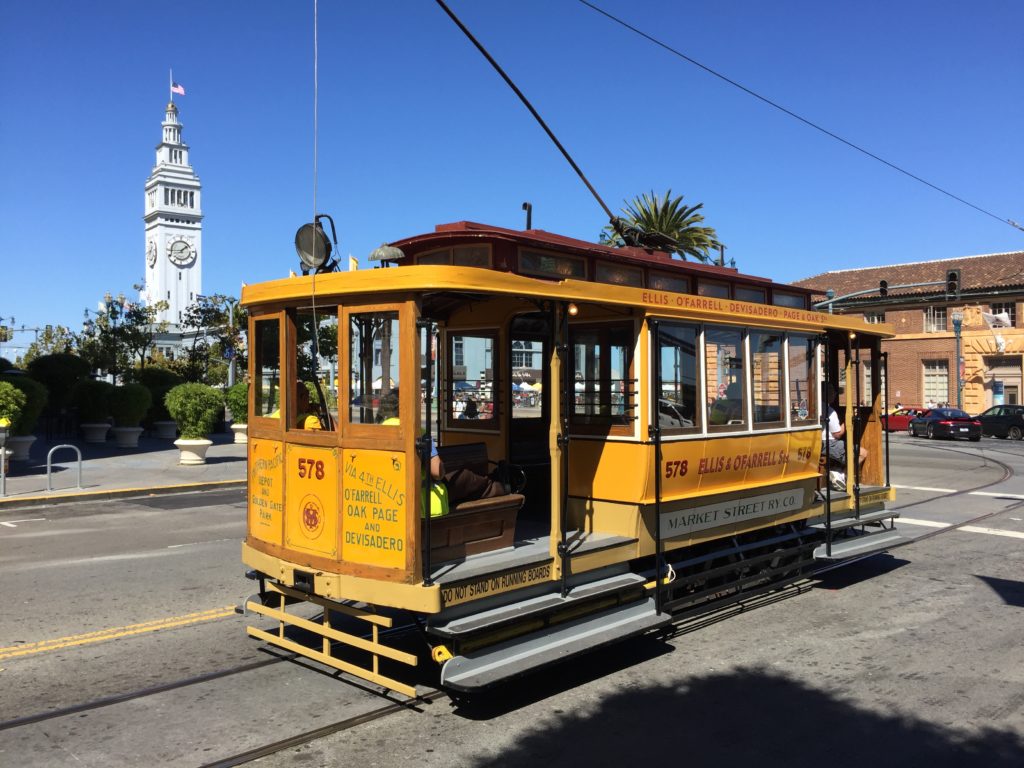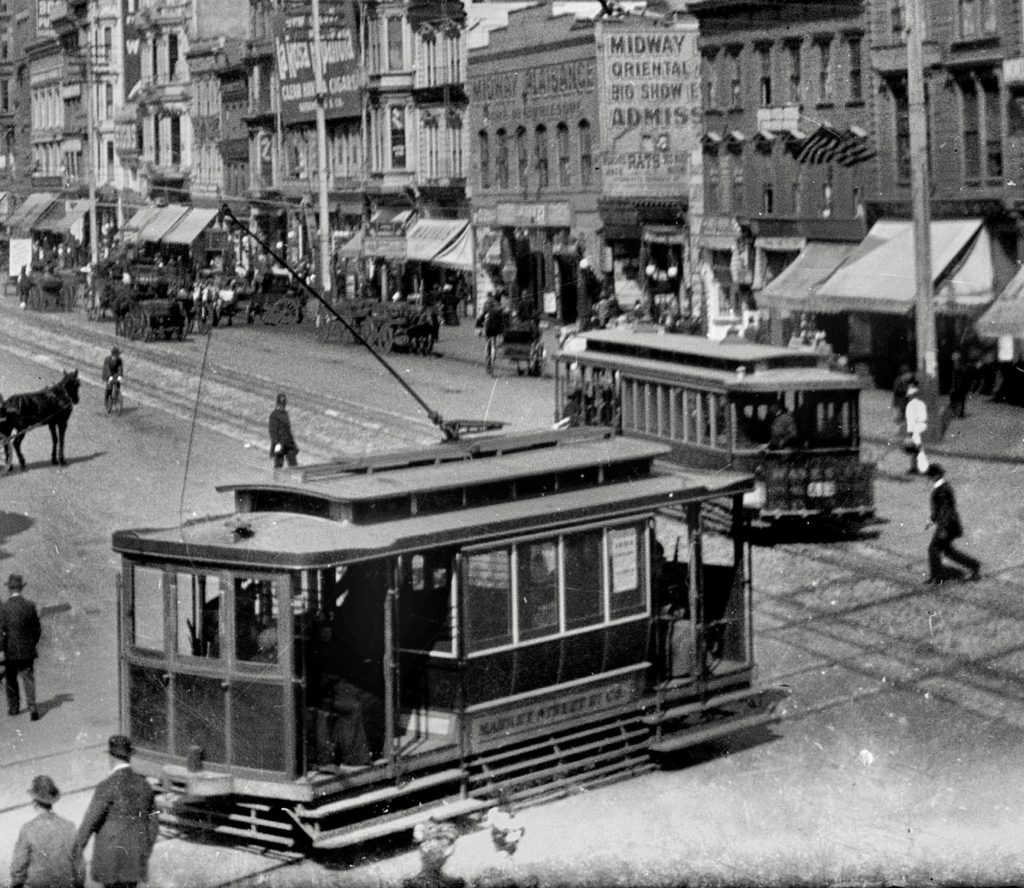
How old is the oldest electric streetcar in Muni’s historic fleet? So old that it regularly crossed paths with cable cars on Market Street. When “dinkies” (small, single truck streetcars) like preserved Car 578 were new, they were also novel, in that cable cars dominated San Francisco transit and had the exclusive rights to Market Street. The electric cars only saw Market when they crossed it. While they looked like cable cars, they were twice as fast and very high tech for the time, 120 years ago.
Two photographic glass plates recently found by Howard Jarvis (no, not the author of Prop. 13 for those who remember back that far) appear to make the dinkies central to the composition. The two photographs were clearly taken by the same photographer, probably within a few minutes of each other, from the same place, the second floor of a building at Ellis and Market, looking southeast across to Fourth Street. Based on other photos of the same intersection, these shots were taken between 1898 and 1900. One photograph is shifted a little to the right from the other one. We include several crops and a full image here.
In the crop at the top of the post, we see a dinky identical to Muni’s Car 578, built in 1896, crossing Market from Ellis to Fourth Street, headed south to the Southern Pacific Train Depot. (We can’t make out the full car number, though it doesn’t appear to be 578 itself but rather another in the bright-yellow fleet of Ellis-O’Farrell line cars, all built by Hammond, which also built many of the California Cable Cars still in Muni’s fleet today.)
In the close-up below, we see that the dinky is crossing behind a green Hayes Street cable car (later the 21-Hayes streetcar and then trolley bus), which is about to pass an establishment called “Midway Plaisance, Home of Burlesque” on its route to the newly-opened Ferry Building. First, though, it will roll past a small shop with a sign on its roof that says RATS in big letters and ROACHES, ANTS, and BEDBUGS in smaller ones. Really wish we could read the rest of it but we presume it’s an extermination business, located where the landmark Humboldt Bank Building rose a few years later.
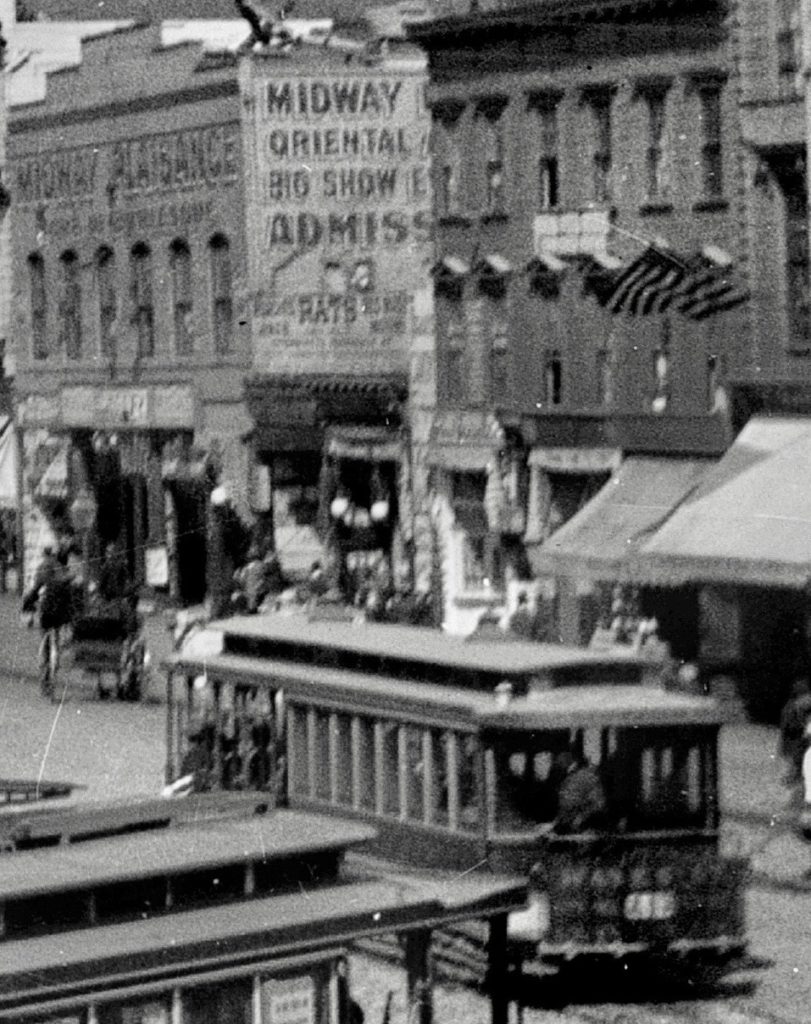
The Humboldt Bank was designed more or less as a bookend to the Call Building at Third and Market, which dominates the full frame below when you zoom out (remember when “zoom” had nothing to do with quarantine communications?).
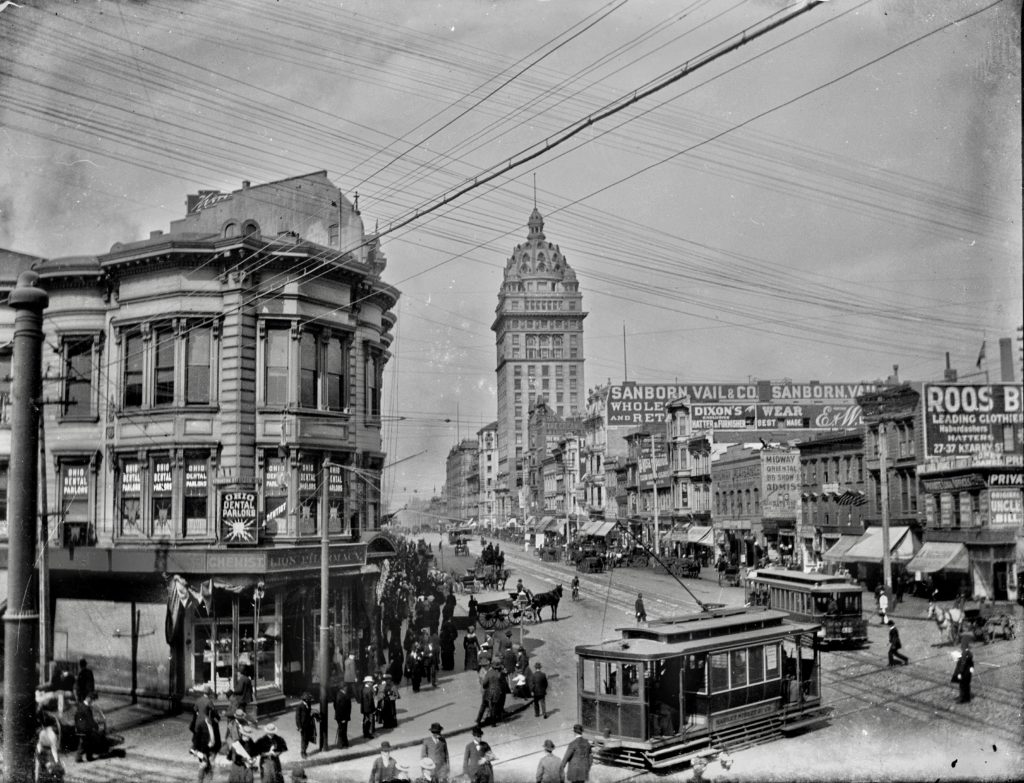
Fascinating to look at the people (you can click on the above photo to get a larger view). Scores of men and women clearly visible, but not a single bare head. Interesting signs in this image too, such as “Ohio Dental Parlors” occupying a large space on the second floor in the building at left. (Did Ohio have some kind of advanced dentistry?)
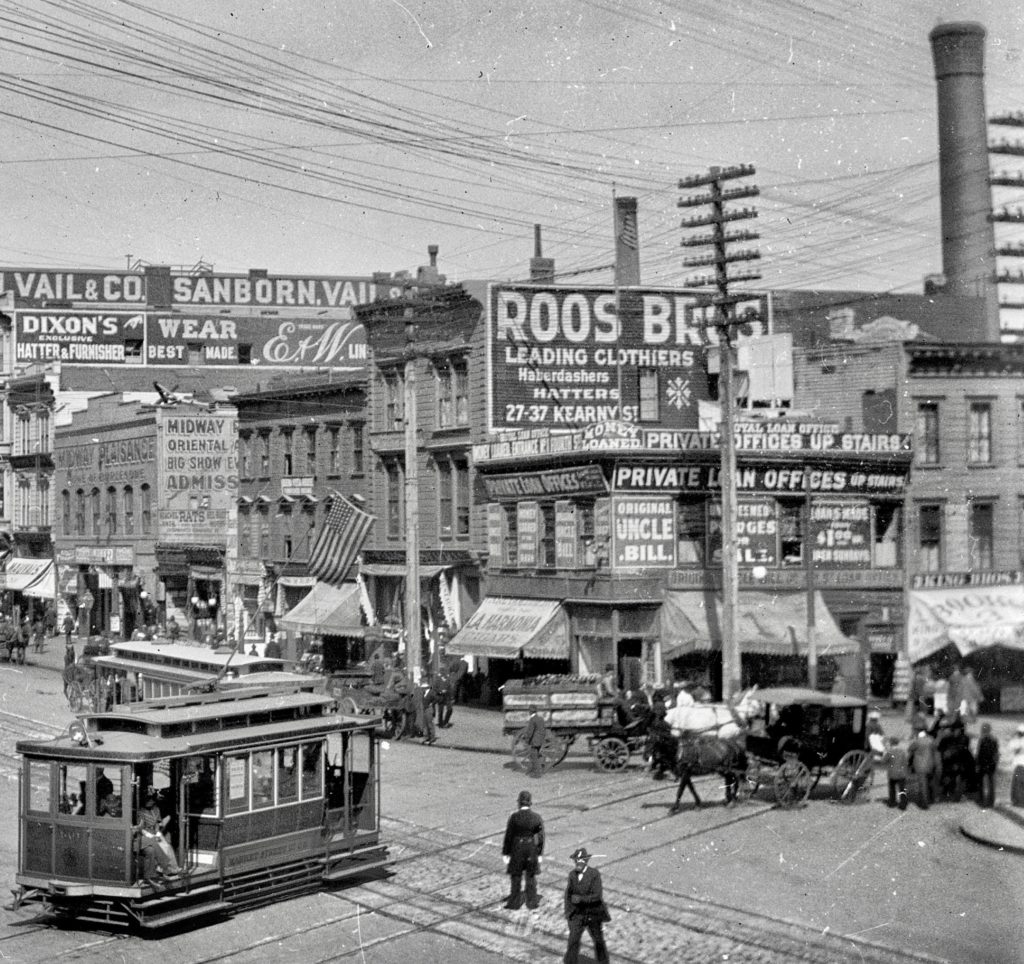
A crop of the second image, above, shifted slightly south, reveals a few additional things. First, there’s the beer wagon at the corner, passing under the store awning advertising “La Harmonia Cigars”. Beer and cigars were the most common advertisements seen in photos of this era, and by extension, presumably the most commonly consumed “vices” of the city of the day.
The dinky in this image is headed north, toward Golden Gate Park out Ellis and then O’Farrell Streets. There’s a cable car in the same place as the first photo but we can’t tell which line it’s assigned to. What can’t be missed though are the garish ads for “Original Uncle Bill Private Loan Offices”. Uncle will loan you money “from $1 up” “at the lowest rate”. And, highly unusual for that time, he’s “open Sundays”. If it’s not already clear that it’s a pawnshop, the sign “unredeemed pledges for sale” is a giveaway.
One other piece of San Francisco trivia. The second image makes it clear that the big billboard to the right is for Roos Brothers, “leading clothiers”, at 27-37 Kearny Street, two blocks away. That building, plus the one the ad is painted on, plus everything else visible in the above photo (except the Call Building), burned on April 18, 1906. But Roos Brothers survived as a family business and later relocated to a stylish store directly across the street from the billboard at Market and Stockton (shown in the Google Maps image below on the left as XXL). Then, after a merger, the firm built a new building across the street, exactly where its billboard stood in 1900 (that location is now occupied by Ross Dress for Less, the white building with the bulbed corner on the right.). The old Call Building is the only common object in the then-and-now photos, though it’s almost unrecognizable following its renovation into an Art Deco facade as the Central Tower in 1940 (it’s the white building on the right in the middle distance).
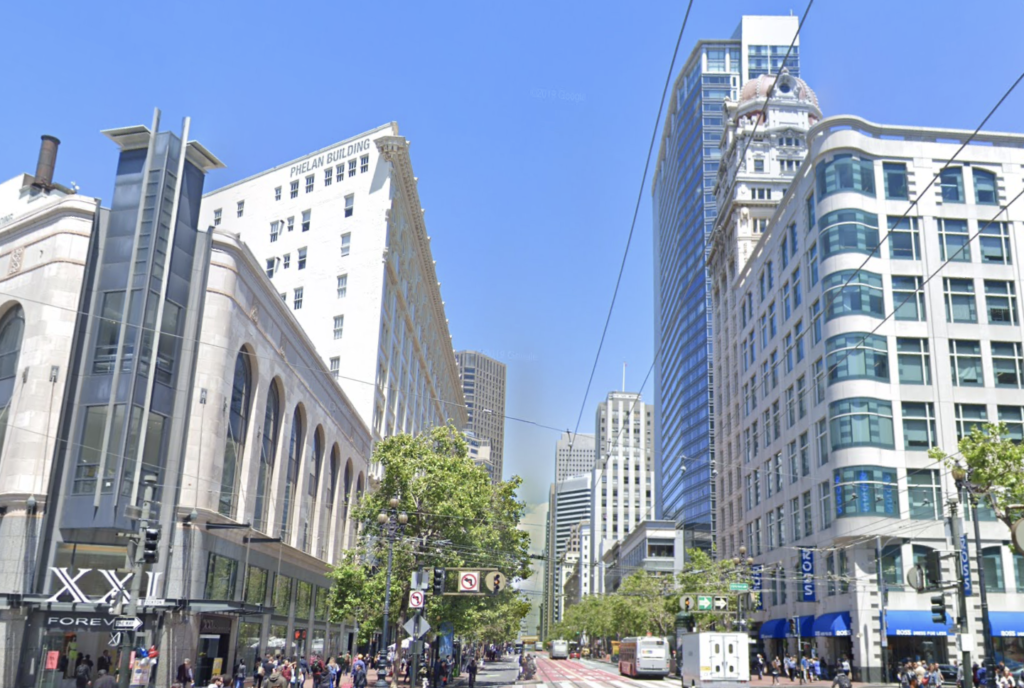
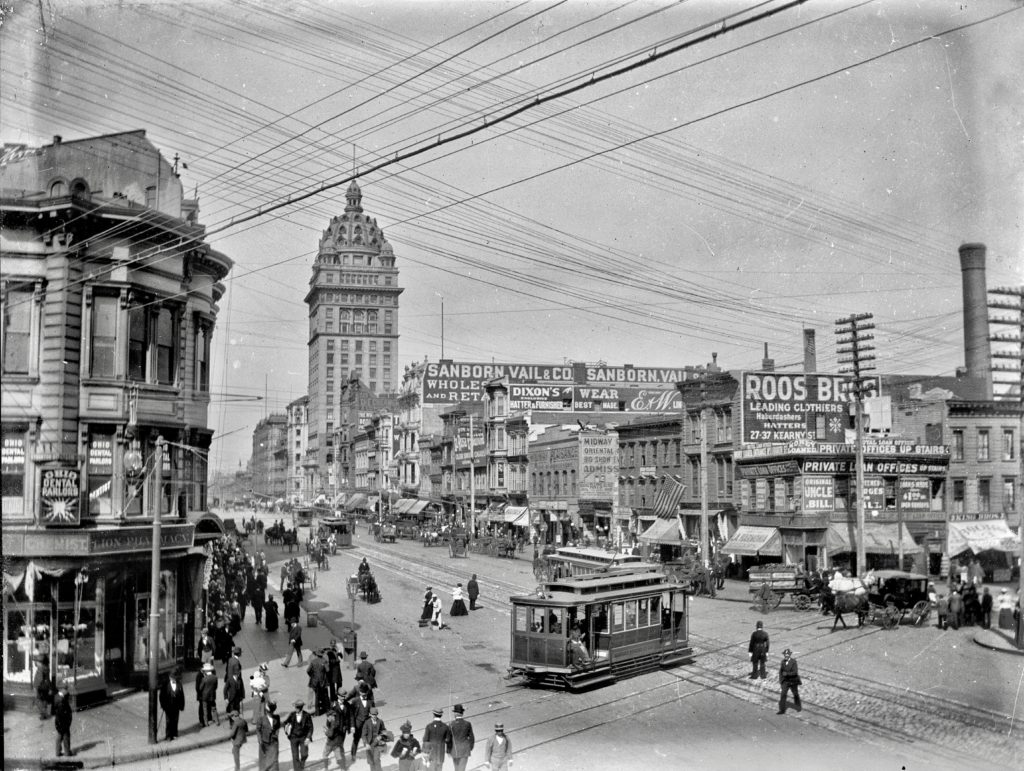
While this intersection today is eerily quiet with no streetcars on Market or cable cars a block away on Powell, it’s still some consolation to get a fresh look at pieces of the past when photos like this appear. Thanks to Mike Ahmadi, who works with Howard Jarvis and let us post these great shots. Mike runs a Facebook Group called “In Howard’s Barn”, which has other great vintage photo finds and offers very hi-res prints for sale. You can inquire at inhowardsbarn@gmail.com. And as wonderful as these vintage photos are, take a moment to imagine yourself there, experiencing it all in glorious color, starting with the bright yellow of the centerpiece, the Ellis-O’Farrell line dinky. We’ll help.
